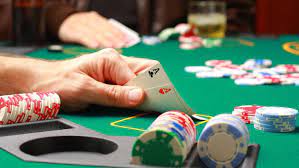In poker, players constantly adapt, seeking strategies that disrupt opponents’ plans. Mastering these maneuvers requires insight into psychology and probability, shaping decisions that influence outcomes. The game hinges on understanding when to shift gears, whether through aggressive betting or strategic folding, sculpting moments that can turn the tide. Insight into these tactics benefits those aiming to refine their gameplay, making each move a calculated step toward victory.
Recognizing Opponents’ Tells
Observing opponents meticulously opens opportunities to predict their next moves. Players often betray their intentions through physical or verbal cues known as tells. A sudden change in behavior, such as increased chattiness or complete silence, might indicate a shift in hand strength. Spotting these tells enables strategic decisions that can turn the tide in one’s favor. Incorporating this strategy requires patience and keen observation skills, making it a powerful tool in altering poker outcomes.
Understanding Positional Play
The seating arrangement in poker isn’t just about where one sits; it dictates the flow of information. Being in a ‘late’ position, where a player acts after most others, offers a distinct advantage. It allows one to make more informed decisions based on the actions taken by those in ‘early’ positions. Leveraging this positional advantage means adjusting one’s playstyle to exploit the less informed actions of opponents, potentially shifting the game’s direction to one’s favor.
Mastering Bluffing Techniques
Bluffing, a well-timed deception, can be as influential as the cards themselves. Successful bluffing convinces opponents of a better or worse hand than one truly holds. It’s not merely about bold bets; it involves controlling physical cues, manipulating betting patterns, and understanding opponents’ perception of one’s playstyle. Bluffing effectively demands a balance between predictability and unpredictability, turning seemingly weak positions into strong ones through sheer psychological maneuvering.
Scientific Betting
Beyond the basic knowledge of when to fold or stay, precise betting introduces a methodical element to the game. This strategy involves calculating pot odds, considering the effective stack size, and evaluating the risk versus reward of every bet or call. Scientific betting isn’t merely about the amount but the timing and context of each bet, transforming it into a deliberate move that communicates strength or weakness, depending on one’s tactical needs.
Intelligent Hand Selection
Choosing which hands to play and which to discard is a fundamental yet complex decision-making process. Factors like table position, the round of betting, and the behavior of opponents profoundly impact these choices. Engaging only with hands that have a favorable chance of winning maximizes one’s efficiency and minimizes unnecessary losses. Intelligent hand selection is about restraint, patience, and strategic forethought, setting the stage for more significant moves later in the game.
Utilizing Poker Hands Rankings
Understanding the hierarchy of poker hands rankings serves as the foundation for making informed decisions throughout the game. This knowledge allows players to evaluate their hand’s strength accurately relative to possible combinations their opponents might hold. A deep appreciation for this hierarchy aids in bluffing, betting, and folding decisions, providing a statistical backdrop against which to strategize. Utilizing this understanding in real time enhances one’s ability to dictate the pace and direction of the game.
Applying Pressure with Aggressive Play
Turning up the aggression strategically forces opponents into difficult decisions, often leading them to fold or act predictably. Aggressive play isn’t about recklessness but about applying calculated pressure, especially in situations where one’s table image and position give leverage. This approach takes advantage of tight players and seizes control of the pot size, making it a dynamic move that can alter the game’s momentum.
Adapting to Table Dynamics
A key to ongoing success in poker lies in the ability to adapt. Each hand offers new information about the behavior, strategies, and potential weaknesses of opponents. Adapting involves altering one’s playstyle to counteract opponents’ strategies effectively. This evolution within the game requires perceptiveness, flexibility, and the courage to deviate from one’s initial strategy. Players who adapt frequently keep their opponents guessing, making them harder to read and predict.
Leveraging Semi-Bluffing
Semi-bluffing presents a unique blend of truth and deception. This tactic involves betting or raising with a hand that might not be the strongest currently but has the potential to improve significantly as additional cards are revealed. The semi-bluff is a powerful tool because it carries the dual threat of immediate winning through opponents folding or enhancing one’s hand strength in future betting rounds. Exercising this move with discretion paves new pathways to winning, adding layers of complexity to one’s strategic approach.
Employing Pot Control
Managing the pot’s size based on the hand one holds and the opponents one faces can significantly influence the game’s outcome. Pot control involves making decisions that keep the pot manageable when unsure about having the best hand. Conversely, it means inflating the pot when confident, maximizing potential winnings. This calculated approach to the game’s economic aspect allows for more flexibility in subsequent rounds, making it a subtle yet potent strategic maneuver.
